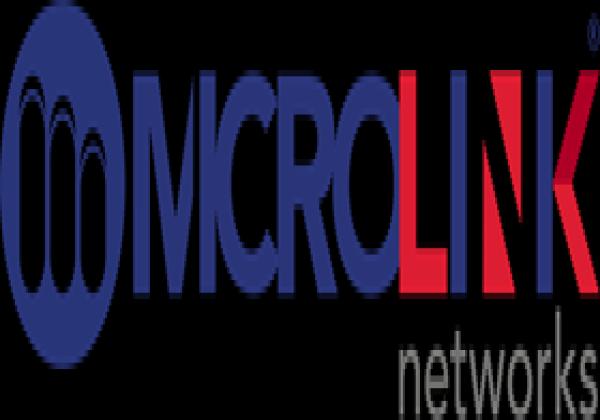WLAN controller Suppliers in Dubai,UAE

Microlink networks llc
Phone: +97145561557
Emirate:Dubai, P.O.BOX:
Address:Boulevard Plaza Tower One, Level 3, Downtown Dubai, United Arab Emirates

Bits Secure IT Infrastructure LLC
Phone: +971 43282444
Emirate:Dubai, P.O.BOX:3282444
Address:SUNTECH Tower - Office 903 - Dubai Silicon Oasis - Industrial Area - Dubai - United Arab Emirates
A WLAN controller (WLC), also known as a wireless LAN controller, is a centralized device that manages and monitors multiple wireless access points (APs) within a wireless local area network (WLAN).
Here's a breakdown of its functions:
Functionality:
Centralized management: Unlike standalone APs that require individual configuration, a WLC allows you to configure, monitor, and troubleshoot all your APs from a single interface. This simplifies network management and reduces the time and effort required to maintain a large number of APs.
Improved performance: WLCs can optimize network performance by:
Load balancing: Distributing network traffic evenly across multiple APs to prevent any single AP from becoming overloaded.
Client handoff: Seamlessly transferring connected devices between APs as users move around the coverage area, ensuring a consistent and uninterrupted wireless experience.
Radio frequency (RF) management: Optimizing radio channels and signal strength to minimize interference and maximize network coverage and capacity.
Enhanced security: WLCs offer advanced security features like:
Centralized user authentication and authorization: Enforcing security policies and controlling access to the network from a single point.
Rogue access point detection and prevention: Identifying and disabling unauthorized devices attempting to connect to the network.
Encryption: Securing wireless traffic using robust encryption protocols.
Benefits of using a WLC:
Simplified network management: Centralized management reduces complexity and saves time and resources compared to managing individual APs.
Improved network performance: Load balancing, client handoff, and RF management optimize network performance and user experience.
Enhanced security: Centralized security features offer comprehensive protection against unauthorized access and other threats.
Scalability: WLCs can easily scale to accommodate a growing number of APs and users as your network requirements evolve.
Types of WLCs:
Standalone WLCs: These are dedicated devices that manage a single network.
Integrated WLCs: These are embedded functionalities within existing network devices, such as routers or switches.
Choosing a WLC:
When selecting a WLC, consider factors like:
Network size and complexity: The number of APs and users you need to manage.
Desired features: Consider the specific features you require, such as load balancing, client handoff, security capabilities, and scalability.
Budget: WLCs range in price depending on their features and capabilities.
In summary: WLAN controllers are valuable tools for managing and optimizing large-scale WLANs, offering simplified management, improved performance, enhanced security, and scalability. If you have a network with multiple access points, a WLC can be a worthwhile investment to ensure efficient and secure wireless connectivity.
Here's a breakdown of its functions:
Functionality:
Centralized management: Unlike standalone APs that require individual configuration, a WLC allows you to configure, monitor, and troubleshoot all your APs from a single interface. This simplifies network management and reduces the time and effort required to maintain a large number of APs.
Improved performance: WLCs can optimize network performance by:
Load balancing: Distributing network traffic evenly across multiple APs to prevent any single AP from becoming overloaded.
Client handoff: Seamlessly transferring connected devices between APs as users move around the coverage area, ensuring a consistent and uninterrupted wireless experience.
Radio frequency (RF) management: Optimizing radio channels and signal strength to minimize interference and maximize network coverage and capacity.
Enhanced security: WLCs offer advanced security features like:
Centralized user authentication and authorization: Enforcing security policies and controlling access to the network from a single point.
Rogue access point detection and prevention: Identifying and disabling unauthorized devices attempting to connect to the network.
Encryption: Securing wireless traffic using robust encryption protocols.
Benefits of using a WLC:
Simplified network management: Centralized management reduces complexity and saves time and resources compared to managing individual APs.
Improved network performance: Load balancing, client handoff, and RF management optimize network performance and user experience.
Enhanced security: Centralized security features offer comprehensive protection against unauthorized access and other threats.
Scalability: WLCs can easily scale to accommodate a growing number of APs and users as your network requirements evolve.
Types of WLCs:
Standalone WLCs: These are dedicated devices that manage a single network.
Integrated WLCs: These are embedded functionalities within existing network devices, such as routers or switches.
Choosing a WLC:
When selecting a WLC, consider factors like:
Network size and complexity: The number of APs and users you need to manage.
Desired features: Consider the specific features you require, such as load balancing, client handoff, security capabilities, and scalability.
Budget: WLCs range in price depending on their features and capabilities.
In summary: WLAN controllers are valuable tools for managing and optimizing large-scale WLANs, offering simplified management, improved performance, enhanced security, and scalability. If you have a network with multiple access points, a WLC can be a worthwhile investment to ensure efficient and secure wireless connectivity.


